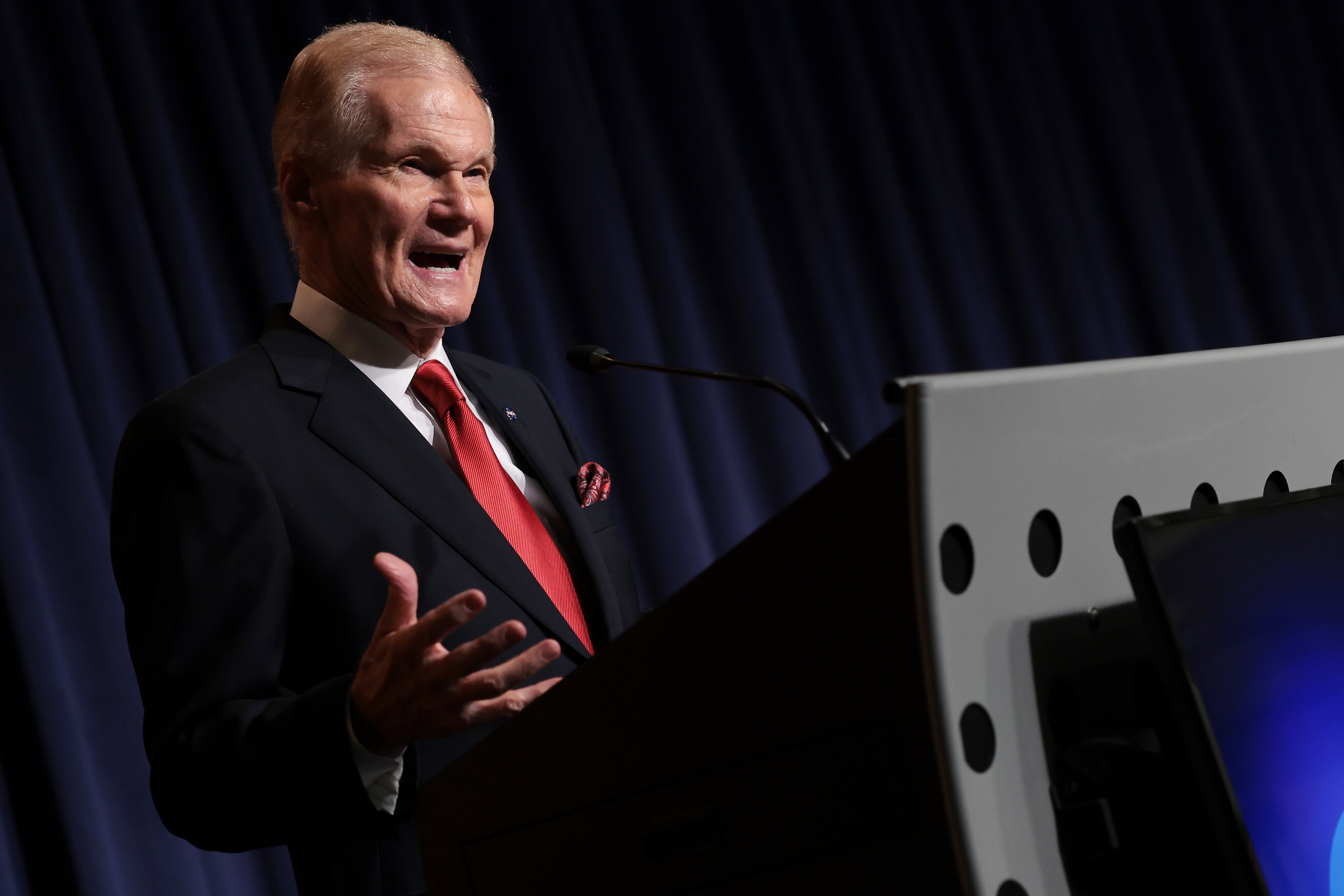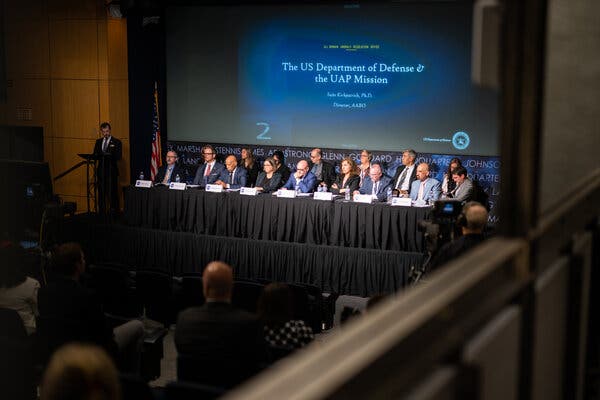NASA Introduces New U.F.O. Research Director
The role was created in response to the recommendations of a report that found the agency could do more to collect and interpret data on unidentified anomalous phenomena.

Pledging a new, transparent, scientifically rigorous look at U.F.O.s, NASA on Thursday said it had appointed a director of research on the topic — and then kept the name of the director a secret for about seven hours.
The new position is part of NASA’s response to recommendations made by an independent study team that the agency had convened. The panel looked at how to better gather and study information about “unidentified anomalous phenomena,” or U.A.P. — the modern term for U.F.O.s.
The panel’s report, released on Thursday, did not attempt to provide a definitive answer to whether galaxy-trotting extraterrestrials are zipping through Earth’s skies. But it does propose a bigger role for NASA in tackling the question.
“NASA will do this transparently,” Bill Nelson, the NASA administrator, said during a news conference on Thursday morning at the agency’s headquarters in Washington, D.C., discussing the report.
During the news conference, Mr. Nelson first talked about NASA’s Perseverance rover on Mars, which is collecting rock samples that might contain hints of life that lived there several billion years ago. He then turned to the James Webb Space Telescope, which is studying planets around distant stars for clues that they may be habitable or even inhabited by life.
The U.A.P. work, he said, follows a similar yearning for learning about the possibilities of life elsewhere in the universe. “This is the first time that NASA has taken concrete action to seriously look into U.A.P..” Mr. Nelson said.
Nicola Fox, the associate administrator for NASA’s science mission directorate, said the person serving as the new director of U.A.P. research had been in that role “for a while now,” but declined to identify him. ”We will not give his name out,” she said.
On Thursday evening, the agency identified the director as Mark McInerney in an updated news release. He previously served as NASA’s liaison with the Defense Department for U.A.P. issues. In the news release, NASA said he had also worked in various positions at NASA’s Goddard Space Flight Center in Maryland, the National Oceanic and Atmospheric Administration and the National Hurricane Center.
In a post on X, the social network formerly known as Twitter, Dr. Fox wrote, “As we continue to digest the study team’s report and findings, please treat him with respect in this pivotal role to help us better scientifically understand U.A.P.”
NASA officials said that part of the reason for initially keeping Mr. McInerney’s identity secret was the harassment experienced during the period of the study by some of the 16 members of the independent panel, who included university professors, space industry officials and a science journalist.
“Some of them actually rose to actual threats,” said Daniel Evans, assistant deputy associate administrator for research in NASA’s science mission directorate. “And yes, that’s in part why we are not splashing the name of our new director out there, because science needs to be free.”
The federal government’s knowledge of U.A.P.s has recently been the subject of proposed federal legislation. In a House oversight subcommittee hearing in July, lawmakers quizzed a former intelligence official who claimed knowledge of a government cover-up of extraterrestrial technology.
U.A.P.s often turn out to be innocuous objects, like weather balloons. Most experts consider alien spacecraft to be an unlikely explanation for any of the events. But it is possible that some of what has been observed could be as-yet-undiscovered atmospheric phenomena or tests of advanced weapon systems.
“One of the main goals of what we’re trying to do here today is to move conjecture and conspiracy towards science and sanity,” Dr. Evans said. “And you do that with data.”

The panel recommends that NASA use its Earth-observing instruments to collect environmental data coinciding with U.A.P. reports and enlist members of the public to send in a broader swath of observations, perhaps through a smartphone app.
“It always comes back to the data you feed into your analysis,” said David Spergel, an astrophysicist who is president of the Simons Foundation and served as the chair of the U.A.P. panel. “If you don’t have good data, you’re not going to learn things.”
Smartphones can take sharp images, note precise locations, magnetic fields and record sounds. “There’s a wealth of data that a cellphone takes,” Dr. Spergel said. “If you see something you don’t understand, collect data. We aggregate the data and we learn from it.”
Broader collection of data could also reduce the stigma and ridicule that many people fear if they talk about something they saw. “Stigma has limited reporting by pilots, both civilian and military,” Dr. Spergel said.
The panel also suggested using sophisticated computer algorithms, including artificial intelligence and machine learning, to look for subtle patterns in U.A.P. reports that may help identify the underlying phenomena.
Some of the questioning veered toward the odd and surreal. One journalist asked about the ufologist who on Tuesday displayed before Mexico’s Congress what he described as two corpses of aliens.
“Has NASA been in touch with the Mexican authorities about the rather sensational revelations earlier this week of two allegedly nonhuman corpses?” the journalist said. “And what, if any, importance do you attach to these discoveries?”
Dr. Spergel replied, “This is something that I know I’ve only seen on Twitter.”
He gave the analogy of the moon rocks that NASA collected during the Apollo moon landings 50 years ago, which are available for study to scientists around the world.
“If you have something strange, make samples available to the world scientific community and we’ll see what’s there,” Dr. Spergel said.
The U.A.P. study was announced in June last year by Thomas Zurbuchen, then the associate administrator of the science mission directorate.
Dr. Zurbuchen said examining U.F.O. reports could be “high-risk, high-impact kind of research,” possibly uncovering some entirely new scientific phenomenon, or possibly coming up with nothing new or interesting at all.
During a public hearing in May, the panel tried to explain some of the material that has fascinated the public. It used some (slightly tricky) high school geometry to explain how the object in one video taken by a Navy plane in 2015, known as “GOFAST,” was not moving quickly but at just 40 miles per hour by illustrating how the vantage point on an object could be a visual trick.
This article has been archived for your research. The original version from The New York Times can be found here.


